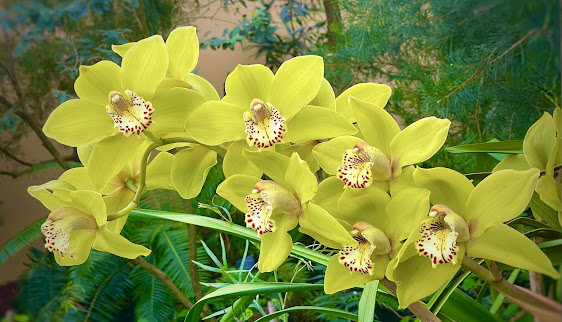"Orchids are the jewels of the plant kingdom, admired for their exotic beauty and delicate intricacies." - Unknown
Zygopetalum is a genus of orchids known for their beautiful and fragrant flowers. Native to the rainforests of Central and South America, these orchids have unique characteristics and stunning appearance.
One of the defining features of zygopetalum orchids is their zygomorphic flowers which means they have a bilateral symmetry with only one line of symmetry. This gives the flowers a distinct look with each petal having a unique shape and size. Zygopetalum orchids also have a variety of colors ranging from deep purples and blues to lighter pinks and greens.
Zygopetalum orchids are also known for their fragrant scent which is often used in perfumes and other scented products. These orchids require a well-draining potting mix, regular watering and bright, indirect light. They also thrive in high humidity and benefit from regular fertilisation.






.jpg)



























